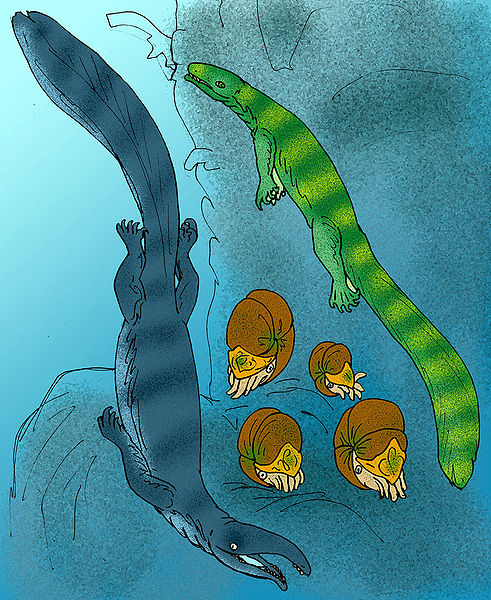Thalattosaurus meaning "sea lizard," from the Attic Greek thalatta (θάλαττα), "sea," and sauros (σαῦρος), "lizard," is an extinct genus of marine reptile in the family Thalattosauroidea. They were aquatic diapsids that are known exclusively from the Triassic period. It was a 2–3 metres (6.6–9.8 ft) long shellfish-eating reptile with paddle-like limbs and a down-turned rostrum occurring in the Lower and Middle Triassic Sulphur Mountain Formation of British Columbia as well as the Upper Triassic Hosselkus Limestone of California. It has gained notoriety as a result of studies on general diapsid phylogeny.
Thalattosaurus
The Hosselkus Limestone where remains of Thalattosaurus have been found
Original reconstruction of T. alexandrae skull by Merriam in 1905 incorrectly portraying a straight snout
Thalattosaurus (left) with relative Nectosaurus (right) hunting shellfish.
Sulphur Mountain Formation
The Sulphur Mountain Formation is a geologic formation of Early to Middle Triassic age. It is present on the western edge of the Western Canada Sedimentary Basin in the foothills and Rocky Mountains of western Alberta and northeastern British Columbia. It includes marine fossils from the time shortly after the Permian-Triassic extinction event.
Dolomitic siltstone quarried from the Sulphur Mountain Formation is featured in the lobby of the Banff Springs Hotel.





